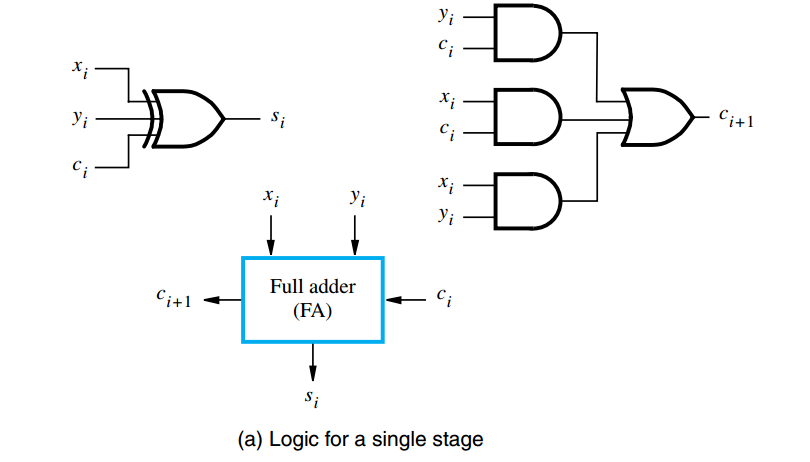Question
How to find the gate delay of carry out \$C_{n}\$ and sum \$S_{n}\$ in ripple carry adder?
I encountered this doubt while going through the book by Carl Hamacher.
It is written as:
Using the implementation indicated in figure (I have attached), \$C_{n−1}\$ is available in \$2(n − 1)\$ gate delays, and \$S_{n−1}\$ is correct one \$XOR\,\,\$ gate delay later. The final carry-out, \$C_{n}\$, is available after \$2n\$ gate delays.
I am completely stuck, how gate delay of carry out \$C_{n}\$ and \$S_{n}\$ is \$2{n}\$ despite carry is using total of 4 gates ans sum only 1 gate?


